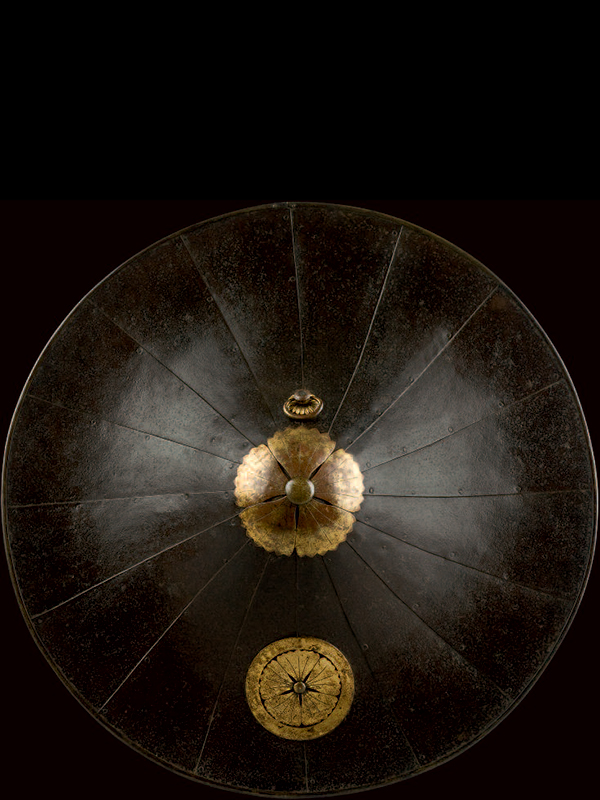Iron jingasa (Samurai hat)
A metal jingasa, formed of sixteen triangular iron plates, fitted at its apex with a large foliate gilt brass tehen kanamono. A gilt brass fiveleaf crest (mon) decorates the front edge and a ring is fixed at the back of the helmet, designed to carry a small identification flag (Kasa jirushi no kan). The interior is lacquered in red.
PROVENANCE
Guila P. Morosini, sold at American Art Association, Anderson galleries Inc, New York, 1015 October 1932, part of lot 171
John Woodman Higgins Armory Collection
Hats such as these are traditionally associated with Samurai culture but it is important to note that they were also worn by other members of Japanese society, including the Samurai, during the 18th and 19th century. The fact that the two lacquered wood jingasas are made from wood and not metal indicates that their principal function was not for protection against arrows and striking weapons, but rather offering shelter from the sun and rain. The metal hat however was definitely made to protect. A similar metal example, dated to the 19th century, was included in the 2010 exhibition Kyoto-Tokyo: Des Samourais aux Mangas at the Grimaldi Forum in Monaco in 2010.[1] A comparable example in lacquered wood, also decorated with a mon, is in the collection of the Royal Armouries Museum at the Tower of London.[2]
- Barral, X. Kyoto – Tokyo: Des Samourais aux Mangas, Grimaldi Forum, Monaco, 2010, p.87
2 Royal Armouries collection, object number XXVIA.287

